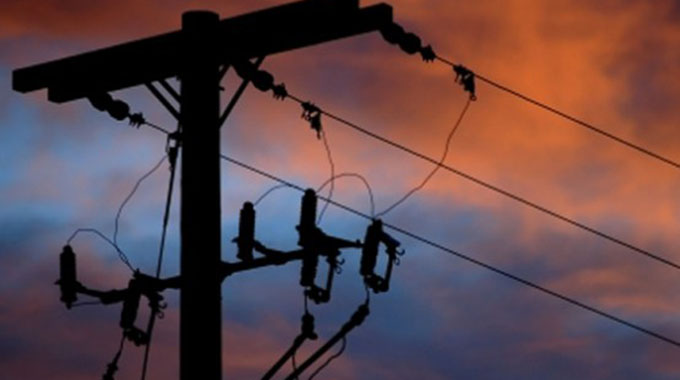
Beaven Dhliwayo Features Writer
The Zimbabwe Energy Regulatory Authority (ZERA) on Wednesday approved an electricity tariff increase of $162,16c per kilowatt hour, following a recent application by power utility ZESA Holdings to adjust the charge to promote viability and better service delivery.
This follows, the application to increase the power tariffs by ZESA Holdings, through its subsidiary, the Zimbabwe Electricity Transmission and Distribution Company (ZETDC), from 38,61c/kWh arguing that the previous rate had been eroded by the movement of macro-economic fundamentals.
Consumers definitely are still in shock from the hike of the average electricity tariff by 320 percent because they are already grappling with soaring inflation which is eroding their salaries.
This is the second time the price of electricity increased inside three months and follows sharp rises in fuel and basic goods prices in the last week, yet salaries have not kept pace.
Electricity tariff increases will have a direct hostile effect on the cost of living and the country’s ability to create jobs, considering that those who are currently gainfully employed are already struggling to make ends meet.
With new tariffs, consumers would want to be assured that efficiency in power generation and distribution will improve so that they go on with their businesses without power cuts.
Over the past years, ZESA’s inefficiency has led to a shambolic power generation and distribution network which has many leaks and the recent tariff increase will not address the anomaly.
Reports point out that ZESA technical losses of power chew up to about 300MW.
Moreover, it is alleged that the introduction of prepaid meters has worsened the faulty billing system with reports that about US$10 million is lost every month.
ZESA management should be honest with the situation on the ground for them to be able to solve the existing problems once and for all.
All over the world, it is common knowledge that if electricity tariffs are increased, there is a higher probability of an interest rate hike as the inflation outlook will accelerate outside the target band.
In simple terms, it means higher cost of local products and services.
What Zimbabweans pray for is that the tariff increase will at least translate into availability of electricity for both domestic and industrial use.
The industry is literally warped because of power outages posing a major risk to the country’s economy.
On the other hand, increased inflation as a result of additional tariff hikes will further constrain the economy’s ability to grow and create the millions of jobs unemployed Zimbabweans so desperately need.
Experts argue that the increase may make some marginal industries economically unviable and affect service delivery at municipalities, telecommunications and engineering sectors.
Zimbabwe is said to be generating less than 631MW from its four power stations against a daily peak demand of 1 800MW in winter and 1 600MW in summer.
Generation capacity at Kariba hydroelectric plant has tumbled below 200MW from 1 050MW at peak while Hwange Thermal Power Station is producing 421MW.
Additionally, Harare and Bulawayo power stations can only manage a measly 34MW due to archaic equipment constraints. This means that even after importing 400MW from Eskom and 100MW from Mozambique there is still a power deficit of 600MW at any point in time.
What this means is that Zimbabweans will continue to be subjected to high electricity tariffs for years to come, unless ZESA comes up with a cheaper electricity solution.
ZESA should embrace solar energy which has the potential of making electricity cheaper and end power shortages.
Even if the tariffs keep hiking, power outages will always be with us unless the power utility addresses the challenges on the ground like improving on infrastructure and revenue collection.
To date, ZESA is owed about $1,2 billion and in turn owed regional power utilities over US$70 million. This situation will mean that ZESA will remain incapacitated and will never reach the electricity demand needed in the country.
To deal with power shortages, as repeated droughts hits hydropower, the country needs to use solar power as an alternative energy source.
The Government said it had set a target to get at least 1 575 megawatts of power from solar by 2030 — about the same amount of electricity the country produces today from a range of sources.
There have been calls for expansion of renewable energy to reduce power outages, but lack of effective coordination in policies has stood in the way costing Zimbabwe billions in lost production.
It is estimated that the country’s economy has lost over US$1,5 billion in revenue, production output, exports and product losses since the beginning of May due to power outages.
In the manufacturing sector, capacity utilisation plunged from 45 percent to below 30 percent, with several companies closing shop or downscaling. This means many people lost their jobs.
Additionally, the mining sector, weakened by 10 percent in the first half of 2019 with the Chamber of Mines warning of low production for the full year.
Retailers and telecommunications companies have been forced to run on expensive diesel generators to sustain their operations in the absence of grid electricity.
Therefore, ZESA has already hurt the economy and it should not try to compensate its revenue losses by increasing tariffs.
The power utility should address issues like why is it now failing to sell more electricity than it used to in the past.
There is need to address inefficiencies in the power utility’s operations. ZESA is losing a lot of electricity during generation, distribution and consumption.
The utility should be honest to the nation and address challenges it is facing and improve on the current power supplies, or else the hike won’t help.
